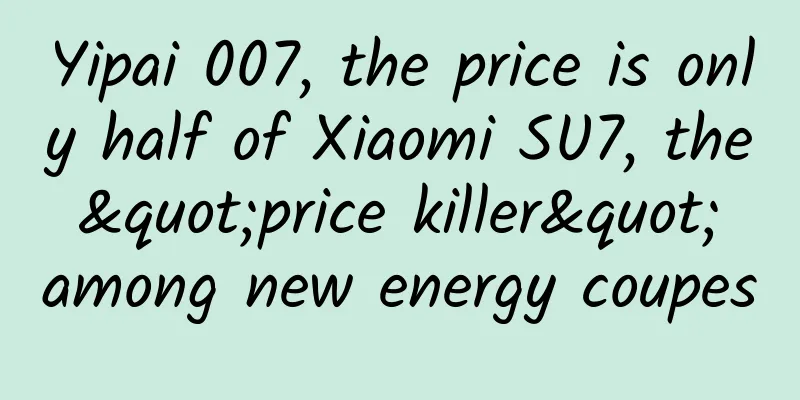Where will the domestic tablet market go in 2014: Blue Ocean or Dead Sea?

|
If you ask what is the fastest growing consumer electronic product in recent years, then it is undoubtedly the tablet computer. Since Steve Jobs released the first generation of iPad, the annual sales volume has reached billions in just a few years. According to IDC data, tablet computers reached 219 million units in 2013. It took 40 years for PC annual shipments to reach 200 million units, but tablet computers broke this record in less than four years and are likely to surpass mainstream PC notebook computers. Faced with such a huge and attractive market, domestic tablet computers have also grown rapidly like mushrooms after rain. Then, with the market changes in the past two years, domestic tablets have not been able to grow rapidly after taking root, and have never been able to occupy a mainstream position in the Chinese domestic market, and have even been increasingly marginalized. So what is blocking the development of domestic tablets, and where is the bottleneck of its development? Domestic tablets fall into the gentle trap of homogeneity From a certain perspective, tablet computers are divided into two categories, one is Apple iPad, and the other is non-Apple xpad. Although such classification is a bit extreme, it must be said that Apple has always firmly controlled the development trend of the market and industry in the industry it created. Although the growth rate of the tablet market slowed down in 2014, Apple's iPad still won the championship in the first quarter, with a market share of 32.5%. The situation in the Chinese market is similar. People's recognition of the Apple brand is even greater than before. The unique advantage of Apple products lies in its complete closed-loop industrial ecological chain. This is a height that other Apple tablets cannot surpass. This is especially true for domestic manufacturers. The Android market has led to the rapid rise of domestic tablets, but it has also put domestic tablets into a gentle trap that they cannot extricate themselves from. In order to reduce costs, most domestic manufacturers choose OEM factories to design product molds for them, resulting in the birth of many tablet products that look identical in appearance, with no difference except for the brand logos. This is especially true for some domestic "copycat" manufacturers, whose cookie-cutter product molds make it difficult to tell the difference between them. In terms of performance, there is not much difference between domestic tablets, they just pile up parameters blindly, especially in the era of overperformance, some obvious differences are only reflected in the running software. The only difference is in the system. Although the Android system can enhance the product characteristics through deep customization, there are not many products that can use this advantage to gain extra points. Although the Xiaomi MIUI system is well received in the mobile phone market, it still has many shortcomings when transplanted to tablets. Brand strength is one aspect, and the lack of active innovation ability is the main reason why domestic tablets are sinking deeper and deeper into the quagmire of homogeneity. Android tablet competition is getting weaker The Android system, which dares to compete with Apple's iOS, was once highly expected by the industry. It is gratifying that the Android system is constantly optimizing and catching up, and actively launching new versions, but there are still many inherent deficiencies in the current competition with Apple's IOS system. First of all, Android is an open source system that can be adopted by all brands. Due to the different R&D levels of various manufacturers, the hardware configurations they carry are also uneven. This leads to great differences in the experience of the products they launch. Similarly, Google encountered the same problem in the development of the Android system. In order to take into account the hardware configurations of different manufacturers, the Android system cannot achieve the highest efficiency. The redundant system greatly reduces the performance of Android tablets. It is rare to have the ability to change the Android system and form your own style in the customized system. For most domestic Android system tablet manufacturers, they still follow the rules and play according to the established route, and this situation is difficult to be effectively changed. Due to the lack of a leader, it is difficult for Android tablets to reach a unified industry standard. Lei Jun once called on Weibo, "The screen sizes and resolutions of various Android tablets are different, which makes adaptation difficult. In addition, the sales of a single model are not high, which leads to low enthusiasm of developers for transplantation. The choice of the same retina screen as the iPad mini for the Xiaomi tablet is the result of repeated thinking. The purpose is to have the same size and the same resolution to facilitate the transplantation of iPad applications. I suggest that everyone consider: using the same resolution to jointly improve the current situation of Android tablets." Yu Chengdong also responded on Weibo, saying, "The current mainstream screen ratio of Android tablets is 16:10, and the adaptation to the 4:3 ratio screen is not good enough. I agree that everyone should work together to promote Android application software developers to adapt to different display ratios and resolutions, enrich and improve the Android tablet application software experience, and promote the development of the Android tablet ecosystem." Huawei and Xiaomi are both representative companies among domestic manufacturers. We hope that this debate between the two sides and the thinking behind the industrial chain can promote the improvement of the competitiveness of domestic Android tablet computers. The "low price" killer feature of domestic tablets is no longer sharp Once upon a time, domestic tablets relied on the killer weapon of "low price" to break through the siege in the domestic market. However, with the fierce market competition, the negative effects caused by low prices far outweigh the benefits they bring. For most unknown domestic tablet manufacturers, price is the most effective way for them to impact the market. They can quickly occupy the market and make profits through low prices, but this development model is only suitable for the initial stage. If they want to occupy the market for a long time and gain user recognition, they must build their own brand and launch products in the future to strengthen product quality and innovation. According to statistics, the number of domestic tablet manufacturers has long exceeded thousands, but the actual market share is less than 10%. At present, most domestic brands still rely on low prices as a marketing tool. It cannot be denied that low prices bring benefits to consumers that are unmatched by other forms of promotion, but manufacturers cannot rely on low prices to attract attention for a long time. Excessively lowering prices will lead to meager profit margins that cannot support future development and product innovation. At the same time, it cannot guarantee that the selection of materials, materials, and workmanship will lead to the advantages of leading products of the same level. Sooner or later, they will be eliminated in a vicious cycle. Therefore, if domestic brands want to enter the mainstream market, they must get rid of the fatalism of winning by low prices. Fortunately, some representative domestic manufacturers have gradually begun to get rid of the shadow of low prices. For example, Lenovo's YOGA TABLET Thorn Gold Edition has an outstanding and innovative design that makes people shine, and its performance in the market has also been recognized by the public. It has become one of the few high-quality domestic tablet products that do not win by price. Wintel Alliance is both a disruptor and an innovator The chaos of domestic Android tablets has given the other side hope. Since the end of last year, Intel has begun to cooperate with domestic tablet manufacturers on a large scale. Relying on its strong R&D capabilities and its "influence" on PC manufacturers, Intel has begun to layout its own tablet market. On the one hand, it wants to reverse the declining share in the PC market, and on the other hand, it wants to break the deadlock of homogeneity of domestic tablets. Of course, Intel did not disappoint everyone, and several processors also performed well. The launch of Z2580 has directly put ARM processors under competitive pressure. However, Intel is still too weak to leverage the tablet market on its own, and the best partner is Microsoft. This old "hardware" partner has been in the PC industry for many years and once enjoyed unlimited glory. In the industry competition of tablets, they also walked together. The Wintel model has achieved great success on PCs, and the determination of both parties to exert their strength in the tablet market cannot be underestimated. In order to attract domestic tablet manufacturers, Microsoft recently launched a policy of free licensing of the Windows operating system, one of which is completely free for tablets and smartphones under nine inches. In addition, Microsoft has once again expanded the scope of free use, and all tablets priced below US$250 will also enjoy Microsoft's free system policy. If nothing unexpected happens, a large number of domestic manufacturers will join the Wintel tablet camp by the end of the year. Although Wintel's market share is still too low to create a stir, and most of these manufacturers are still straddling Android and Wintel, if the market extends an olive branch to Wintel tablets, they will quickly adjust their strategies. With the strong production and sales capabilities of Intel and Microsoft, it is not impossible for Wintel tablets to make a comeback at the end of the year. In the era of three pillars, Win8 opened multiple windows If we make a prediction about the future mobile market, it is very likely that there will be a three-way competition. Apple continues to lead all brands with its strong influence, but its absolute advantage in the industry is no longer as strong as before. Recently, the statistics agency IDC announced the global tablet shipments in the last quarter, and Apple iPad fell by 9.3% compared with the same period last year. This has given the Android tablet camp a new opportunity, but there will be a more obvious polarization in the camp. One type of first-tier brands such as Samsung, Lenovo, and Asus will take the route of boutique differentiation, and the other type of second-tier brands dominated by low prices will continue to struggle to support. Wintel tablets will provide the most dramatic market driving force, giving the tablet market innovative vitality and diverse development possibilities. With the huge user base and usage habits accumulated by PC products, Wintel tablets will gain unprecedented recognition by perfectly porting many PC software and functions to tablets, especially in the commercial market, which has a very high market share. This will bring greater development potential to the tablet market and solve the problem of sluggish growth in the tablet market. For domestic manufacturers, this is an opportunity to re-understand the market and change the industry landscape. By not allowing products to be restricted by one party and through market performance and flexible matching, domestic manufacturers will regain the initiative in the market. Currently, Intel is also providing very preferential Atom chips to white-label manufacturers in Shenzhen, China. In addition, it also provides localized technical services to tablet manufacturers. Intel has set a goal of selling 40 million tablets based on Atom chips this year. Relying on Intel's low-priced Atom chips and technical solutions, white-label manufacturers have been able to manufacture tablets priced below $250. These tablets are also eligible to apply for Microsoft's free operating system discounts. Relying on the support of Microsoft and Intel, Windows tablets will have stronger price competitiveness in the market.How to start the ice-breaking journey for domestic tablet computers? It is difficult for me to make an effective and true judgment on the future market, but what is certain is that tablet computers will still occupy a large mainstream consumer group in ten years. In the domestic market, there are still many areas for tablet computers to be explored, such as the promising industry and commercial markets, as well as the consumer market for children and the elderly. The market segmentation has given domestic tablet manufacturers more development opportunities. How to seize these opportunities is a topic that domestic tablet manufacturers need to think hard about. However, the fierce competition among domestic tablet manufacturers must not repeat the old path of low prices and homogeneity. Otherwise, no matter how bright the future of this "blue ocean" is, it will eventually become a "dead sea". If domestic tablets want to stand out in the market competition, they must look further ahead, continue to make good products, and allow more new brands to obtain opportunities brought by innovation. Only in this way can a healthy market atmosphere be formed, and more domestic tablets can truly enter the international market. As a winner of Toutiao's Qingyun Plan and Baijiahao's Bai+ Plan, the 2019 Baidu Digital Author of the Year, the Baijiahao's Most Popular Author in the Technology Field, the 2019 Sogou Technology and Culture Author, and the 2021 Baijiahao Quarterly Influential Creator, he has won many awards, including the 2013 Sohu Best Industry Media Person, the 2015 China New Media Entrepreneurship Competition Beijing Third Place, the 2015 Guangmang Experience Award, the 2015 China New Media Entrepreneurship Competition Finals Third Place, and the 2018 Baidu Dynamic Annual Powerful Celebrity. |
<<: Galaxy S4 spontaneously catches fire again: battery not original
>>: How is WeChat’s “reading count” calculated?
Recommend
Tesla announced its production capacity in the first half of the year, 164,000 vehicles, which is equivalent to the third quarter of last year
Recently, foreign media reported that Tesla, the ...
What should we do if the ocean also loses hair? Its "hair transplanter" turns out to be seaweed
Produced by: Science Popularization China Author:...
Have you started to compete with your friends in the circle of friends? Experience the new version of WeChat: A comprehensive review of new features
On December 23, 2019, WeChat released a new versi...
Incredible survival skills of astronauts, which one can you do?
Welcome God Thirteen home o(* ̄▽ ̄*)ブOn the morning...
Li Muzi pelvic floor muscle visceral fascia 10 sections
Li Muzi's 10-session pelvic floor muscle and v...
Promotional tactics for selling goods through live streaming!
Recently, Wang Leehom's live streaming lectur...
Introduction to placing Wenchang Tower for people born in the Year of the Pig in 2020
Introduction to placing Wenchang Tower for people...
Keep user operation system
In the past two years, because of the epidemic, e...
Taking Xiaomi and Hammer as examples, we can explain the two pricing logics of products
· There is a classic textbook in American marketi...
Pressure valve frozen! Countdown stuck at -40 seconds, SpaceX "Starship" launch plan delayed
At about 8:10 a.m. Central Time on April 17, Spac...
How to quickly build a highly active community of 5,000 people in 20 days?
He has served as strategic director of LinkeBess,...
As smartphones have developed to this day, I increasingly want to go back to the Nokia era
To be honest, the development speed of smartphone...
1029 Hi P Day creates the TV industry's Double Eleven PPTV focuses on opening the era of content + hardware customization
With the deepening development of the smart home ...
As the Year of the Ox approaches, are those enduring health-preserving methods in life secrets or misunderstandings?
Niu Niu: The New Year is prosperous, let’s make s...
What is the lowest price per gram of good Cordyceps sinensis?
As a precious tonic medicine, Cordyceps sinensis ...









